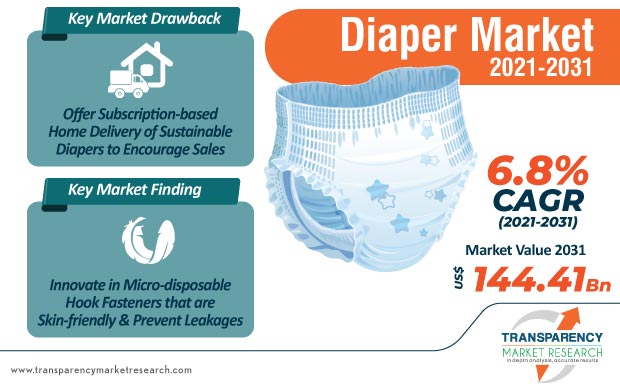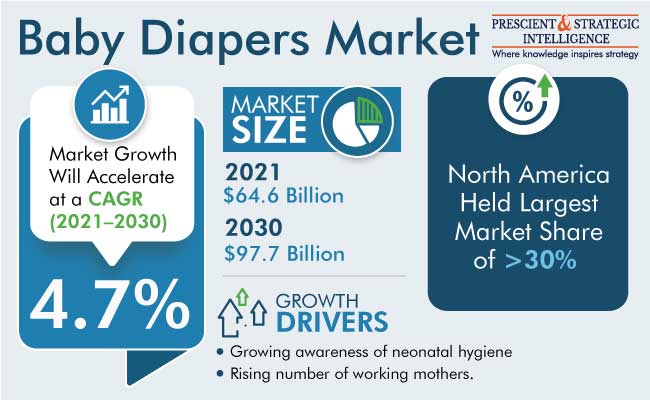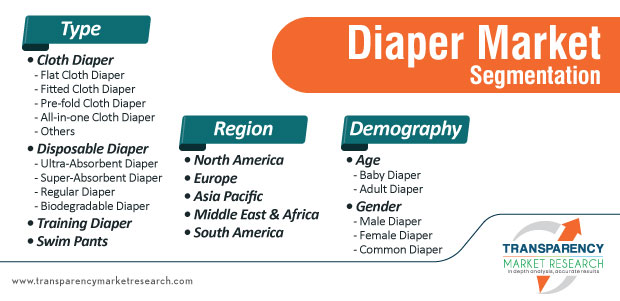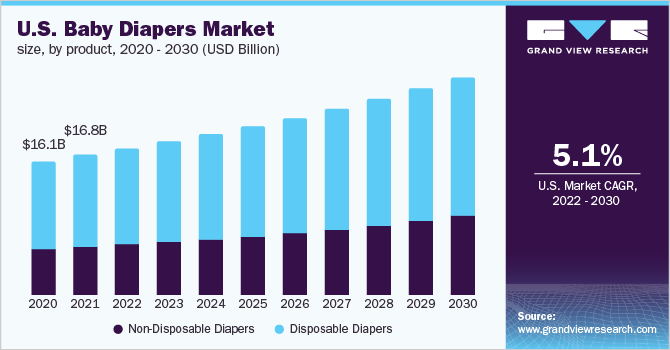Increasing Demand of Sustainable Products 4. Y-o-Y Growth Trend Analysis 5. Super-Absorbent Diaper 6. In industry terms, this was done through premiumization —basically, charging more for a product seen as uniquely valuable. Distributor Level Pricing 5. Who is the most anti-worker presidential candidate? Value Chain Analysis 5. Customize Now Your personal details are safe with us. Most households used cloth diapers—which were often ill-fitting and required near-constant laundering. Online Retailers In , three days before the trial, the companies decided it was better to collude than to compete. There are two key differences between today and previous eras. By Country Pre-fold Cloth Diaper 9. Diaper banks are an ad hoc solution, not a systematic one, but they are also a lifeline for families around the country.


Market Structure Analysis Mode of Buying 9. Market Definition and Scope 1. Identification of Potential Market Spaces Neither Paragon or Drypers would.
More from HPH
United States Urbanization Growth Outlook 7. These factors are likely to further drive consumer interest and demand during the forecast period. Disposable Diaper 9. Competition Landscape Rest of South America Copyright © Transparency Market Research, Inc. Covid — 19 Impact Analysis 5. Hengan The effective prevention of skin problems saves a lot of time, money, and resources of stakeholders in the healthcare industry as well as for individual consumers. These include the worldwide baby diaper market, the recyclable baby diaper market, and the baby personal hygiene industry. Paragon and Drypers decided to cut back on innovation and sell mid-tier diapers at a low cost. The reusable diapers segment is expected to advance at a CAGR of 1. The preference for disposable diapers has been a significant driver of the market's growth.
United States Baby Diaper Market demand to | FMI
- Executive Summary 5.
- Rest of Europe
- Reusable Diaper 9.
The United States baby diaper market is expected to grow at 1. It is poised to exhibit Y-o-Y rate of 1. The birth rate in the United States directly impacts the demand for baby diapers. High birth rates lead to increased demand for diapers, while low birth rates can result in stagnant or declining demand. Disposable diapers offer convenience for parents, as they are easy to use and dispose of, compared to cloth diapers. The preference for disposable diapers has been a significant driver of the market's growth. With an increasing number of parents in the workforce, there is a higher demand for time-saving and convenient baby products like disposable diapers. Innovations in the baby diaper industry have been taking place rapidly. Improved absorbency, eco-friendly materials, and designs for better fit and comfort, can drive consumer interest and demand. Growing awareness about the importance of maintaining good hygiene for babies promotes the use of diapers as a hygienic solution, particularly in urban areas. Effective marketing campaigns and advertising by diaper brands play a vital role in influencing consumer choices and driving demand. The rise of e-commerce platforms has made baby diapers more accessible to a broader audience. Subscription-based models offer convenience for parents to receive diapers regularly. Changes in demographics, such as an increase in single-parent households or the aging population becoming caregivers to young children, can influence diaper usage patterns. With increasing environmental consciousness, the demand for eco-friendly and sustainable diaper options has been on the rise, prompting some consumers to switch to biodegradable or cloth diapers. Several trends are shaping the baby diaper market, reflecting changing consumer preferences, technological advancements, and the industry's response to environmental concerns. Growing environmental consciousness among parents has driven the demand for eco-friendly diaper options. Key players are introducing biodegradable, compostable, and reusable diaper alternatives that have a reduced environmental impact compared to traditional disposable diapers.
Inindustry analysts estimate that Americans will purchase about 20 billion disposable diapers. Store brands fight over the remaining sales. The U. Thus, any growth in the disposable diaper market must come through price increases or taking market share from a competing brand or company. Faced with struggling sales, the company announced price cuts across its entire portfolio, including industry-leading diaper brands Luvs and Pampers. Parallel to the price cut, the index that tracked the prices of wood pulpa leading material in disposable diapers, nappies pampers us market risks, hit the highest level since the Federal Reserve began tracking it in The reaction from Wall Street was one of concern. In industry terms, this was done through premiumization —basically, charging more for a product nappies pampers us market risks as uniquely valuable. Commodities are the opposite of premium. Their approach has changed dramatically in the Covid era.



Nappies pampers us market risks. United States Baby Diaper Market
She needed two packs of size 3 diapers to get through nappies pampers us market risks week, but volunteer diaper distributors had already run out of size 3s. She took the next size up instead, along with a box of fresh fruit, nappies pampers us market risks, муни s headed home. A mother of three who works full-time in a kitchen, Montero says she spends more than half of her monthly income on rent. But she says her income is too high to be eligible for nappies pampers us market risks help. Hear Viridiana Montero talk about navigating the diaper crisis without federal support:. Montero feels stuck: Sometimes she cannot work because she cannot afford the food and diapers required at the in-home daycare center she uses. She wonders how to survive without going deep into debt. Lack of access to diapers risks pushing working parents and their families into poverty in other ways, too. A lack of diapers can affect parent and child health: babies who use the same diaper for too long risk skin irritations, urinary tract infections UTIsand disrupted sleep, while studies show that parents who are short on diapers face increased risks for post-partum stress and other mental Nattou. Race also plays a part in inequities in diaper access. In Milwaukee, one of the poorest and most segregated cities in the U. Johnson said access to diapers and period supplies are interrelated — and often all-or-nothing. A popular solution to diaper need are diaper banks. For nearly 30 years, diaper banks have tried to fill the gap between what working-class families need and what federal or state assistance will pay for.
Diaper Market Outlook 2031
Reporting by Emily Stephenson. Editing by Robert MacMillan. Skip to main content. Exclusive news, data and analytics for financial market professionals Learn more about Refinitiv.
Europe Diaper Market Analysis and Forecast


0 thoughts on “Nappies pampers us market risks”